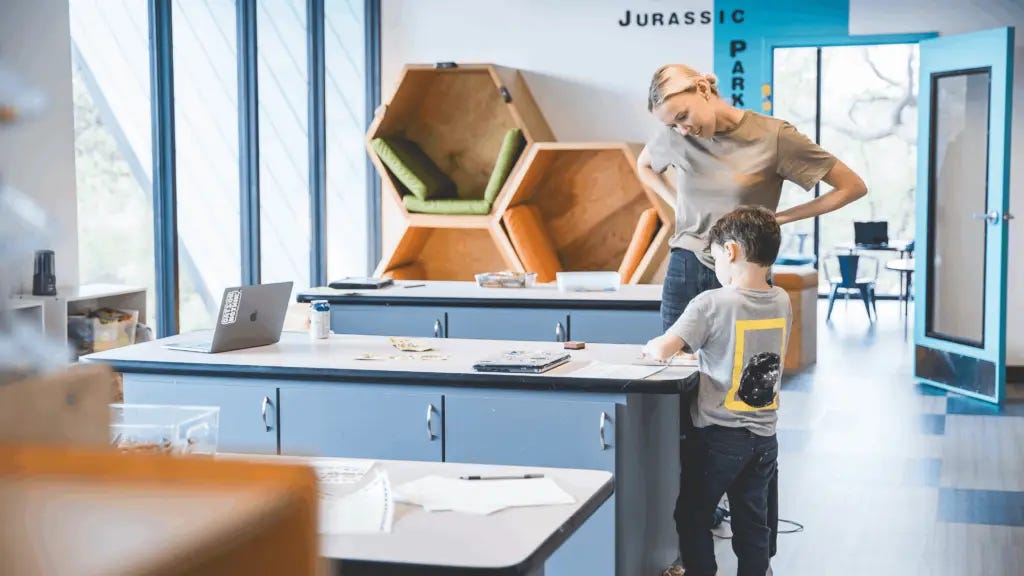Learning to learn in the Age of AI
Why personalizing learning with AI isn’t about replacing teachers—it’s about rediscovering students.
I still remember the sound of pencil sharpeners. The teacher droning on at the blackboard while I stared out the window—my body chained to a chair, my mind off somewhere far more interesting. Not because I didn’t care. I cared a lot. I was curious. I wanted to learn.
The problem? The system wasn’t built for people like me.
I was the kid who asked too many questions, who needed to understand, not just memorize, and who learned through conversation, failure, and exploration—basically the opposite of sitting still and regurgitating facts on a test.
So yeah, I didn’t exactly fit the mold, and year by year, that gap grew. I’d start each school year motivated, ready to prove I could make it work, but the system always outlasted my energy. Eventually, I stopped trying.
Then something unexpected happened.
As an adult, nobody was forcing me into a desk anymore. I was free to learn in my own way. And guess what? My curiosity came back. I started exploring again, reading books I had chosen myself, and learning things I actually cared about. And suddenly, I realized something important: the problem was never me. The problem was the system.
That realization sparked something in me, and also a sense of irritation. How many kids today are stuck in the same outdated setup?
How many brilliant, sensitive, wildly creative minds are falling through the cracks because we’re still running a school model designed to churn out obedient factory workers?
Thankfully, some cracks are beginning to show. And through those cracks, something better is growing.
Let me introduce you to Alpha School.
In the U.S., a group of educators and tech minds decided to rebuild the idea of what school could be. At Alpha, kids don’t sit through endless lectures. They spend two hours a day on academic subjects, powered by AI that actually meets them at their level. The rest of the day? Public speaking, collaboration, creativity, entrepreneurship, and life skills.
Not just more efficient. More human.
We call this mindset Futurebraining. It’s not a curriculum—it’s a shift in how we see learning. We work with adults, teams, and organizations to explore AI as a tool for personalized growth without losing what makes us human.
Short bursts. Personal paths. Real progress.
AI helps, but only by creating more space for the mental, emotional, and social muscles that make us thrive.
AI is creating space for what makes us human
And it works.
Alpha’s students are crushing national benchmarks—not because they’re grinding harder, but because they’re learning smarter. Many tests are in the top percentiles. But here's the kicker: they’re not burned out. They’re engaged.
But let’s be honest: Alpha is a private school. It costs $40,000 annually.
That’s not a scalable solution.
But Nigeria proves you don’t need deep pockets to make a real difference.
A recent World Bank study in rural Nigeria tried something simple: an AI-powered chatbot delivered through WhatsApp. There were no fancy apps or expensive devices—just daily support, questions, hints, and encouragement. After four weeks, students using the chatbot performed significantly better in reading and math than their peers, and it cost just a few dollars per student.
Two wildly different models. One elite, one minimal. But both are pointing in the same direction:
The old system is the problem. Not the students.
Around the world, AI tutors are rewriting the playbook. Singapore, South Korea, India, South America, Africa, Europe—educators everywhere ask: What if we could personalize learning for every child?
Of course, there are real concerns: equity, access, data privacy, algorithmic bias, and the irreplaceable role of human teachers. These are essential guardrails.
But here’s what’s no longer acceptable: Pretending that if we just tweak the old model—throw in a new textbook, upgrade a few classrooms—it’ll somehow work for the world we live in now.
It won’t.
The future of education is knocking.
At Futurebraining, we’re exploring that future through hands-on experiments, coaching, and the real use of AI in learning. It’s not just about kids, it’s not just about adults. It’s about building a system that actually reflects how people learn and grow.
We’re not claiming to have it all figured out. But we’re clear on one thing:
The next version of learning has to be more flexible, more human, and much more tuned into what actually works.
So the question isn’t if we’ll open the door.
It’s whether you’ll recognize the knock and help push it open.





